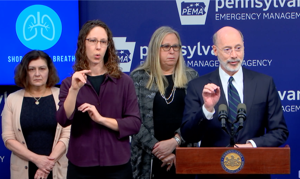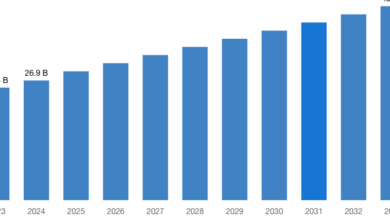A changed state: Pennsylvania’s first COVID-19 cases diagnosed one year ago

(The Center Square) – Saturday marks one year since Pennsylvania’s first COVID-19 cases emerged on opposite ends of the state.
Since then, nearly 950,000 residents have tested positive for the virus and more than 24,000 have died. Another 2.6 million sought out jobless benefits as businesses shuttered and industries came to a halt amid economic and travel restrictions meant to curb the virus’s spread and prevent hospitals from becoming overwhelmed with patients.
The state lost 500,000 jobs that some analysts fear may never return. School districts transitioned to remote learning and 25,000 students flocked to cyber charter schools – the implications of which educational experts fear may leave too many students behind.
Now, as vaccination efforts expand – albeit slowly – across the state, many lawmakers urge a return to normal and seek answers about how Gov. Tom Wolf’s mitigation strategies forever changed the state.
At the heart of the contentious debate between the governor and the General Assembly’s Republican majorities is the extent of executive powers in public emergencies. When Wolf signed the state’s first statewide disaster declaration on March 6, 2020, he assumed widespread authority to shut down schools, businesses and public transit as part of his mitigation efforts – long recognized as some of toughest in the country.
He’s extended the 90-day orders four times in the last year, prompting Republicans to pass nearly a dozen bills aimed at undoing his restrictions. The vast majority have met the governor’s veto pen.
A constitutional amendment pending before the voters in the May 18 primary could alter the governor’s powers by requiring legislative approval for disaster declarations extending beyond 21 days – but GOP leaders said last week the Department of State worded the ballot question using language that makes the effort “designed to fail.”
The administration, for its part, said broad emergency powers remain crucial for responding quickly and accessing all federal disaster aid available. Besides, the amendment does nothing to prevent the Department of Health from issuing public orders to close businesses or limit travel, the governor said.
Republicans say it will at least “give them a seat at the table” the next time the administration contemplates its emergency response.
Prior inclusion may have saved businesses in less-impacted regions of the state from forced shutdowns, Republicans argue. It may have prevented some of the 500,000 jobs lost and kept more residents off unemployment rolls. Independent analysis shows 32% of businesses closed, at least temporarily, as a result of pandemic orders – the second highest rate nationwide.
And, lawmakers insist, they’d have voiced concern over a controversial policy to readmit recovering virus patients back into nursing homes after hospitals discharged them – guidance that sparked a federal inquiry from the U.S. Justice Department.
The Department of Health implemented the policy in March based on guidance from the federal Centers for Disease Control and Prevention about ways to lessen the strain on health care systems. Then-Secretary of Health Dr. Rachel Levine said it was used sparingly and that the widespread outbreak of COVID-19 among senior living facilities could be attributed to “brave” asymptomatic staff members who “unwittingly” transmitted it to residents.
About half of Pennsylvania’s COVID-19 deaths occurred among seniors. The state ranks eighth nationwide for most fatalities reported in nursing homes and three of the top 10 deadliest congregate living facilities in the nation are located in the state.
Michigan, New Jersey and New York also came under scrutiny from the Justice Department over the policy. In New York alone, reports estimate that at least 9,000 virus patients returned to nursing homes, though its unclear how many were impacted in Pennsylvania.
But, an investigation by the House State Government Oversight Committee hopes to find out for sure.
In the meantime, the rocky relationship between the administration and Republicans at the center of public policy debate this last year shows some signs of thawing.
On Wednesday, the bipartisan COVID-19 Vaccine Task Force announced a plan to immunize 200,000 educators statewide over the next few weeks – meaning a majority of teachers could return to the classroom before April.
The plan utilizes the National Guard – a suggestion from task force member and Army veteran Rep. Tim O’Neal, R-Washington – and the state’s first few shipments of the Johnson & Johnson single-shot vaccine to accomplish its expedited timeline.
Still, the administration’s other fixes for the pandemic’s crushing impact on the economy has already fueled another round of bitter debate.
In February, Wolf proposed raising income taxes 46% on the state’s top third of earners. He’d also expand tax forgiveness credits for lower income workers, though critics argue the proposal will raise taxes on hundreds of thousands of small businesses and middle class families.
The administration says families of four making more than $100,000 will see a tax increase under the plan. The $3 billion in additional revenue will help plug the anticipated budget deficit and fund $1.3 billion in additional appropriations to public schools.
A separate plan to gradually raise the minimum wage to $15 an hour over the next seven years would lift an additional 1.1 million workers out of poverty, Wolf said. It’s a nonstarter with Republicans.
A Tax Foundation analysis released this week estimates that Pennsylvania may receive $7.3 billion in federal aid from the American Rescue Plan moving through Congress.
While the Wolf administration did not respond to questions about how that money might be spent, it will likely represent yet another tussle with Republicans over how best to allocate the funds – especially in light of Wolf’s tax plans.
Disclaimer: This content is distributed by The Center Square


